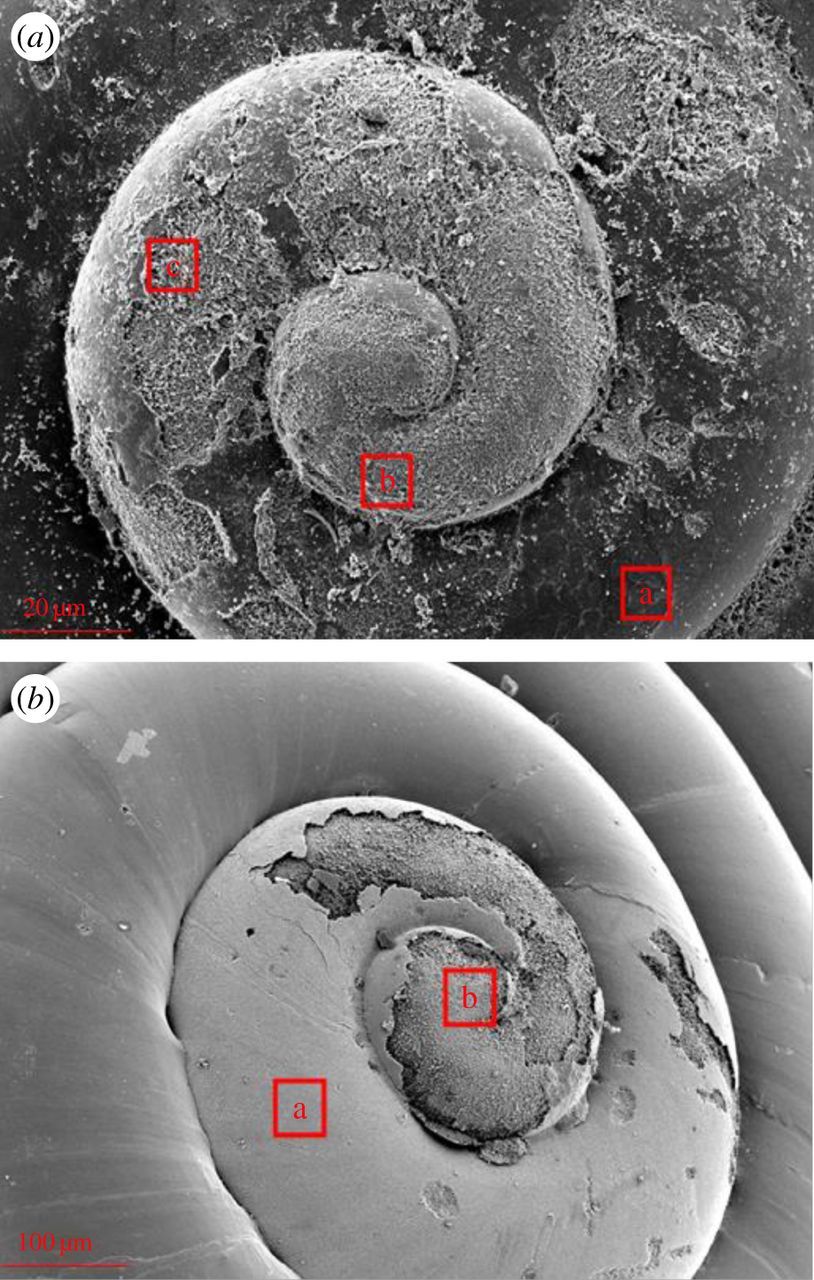The Impacts of Ocean Acidification
Marine life uses carbonate from the water to build shells and skeletons. When the water is more acidic — and there is less carbonate available — animals that rely on it have trouble building shells and skeletons.
If water is acidic enough, these animals’ shells and skeletons can dissolve.

Scanning Electron Microscope images at the left show shells of the pteropod Limacina helicina helicina f. pacifica sampled during a 2011 research cruise showing signs of in situ dissolution from (a) an onshore station, with the entire shell affected by dissolution, and (b) from the offshore region, with only the protoconch (first whorl) affected. Indicated in the figure are: a, intact surface; b, Type I dissolution; and c, severe dissolution (Type II or Type III): see Material and methods for description of dissolution types. Images by Dr. Nina. Bednaršek. From “Limacina helicina shell dissolution as an indicator of declining habitat suitability owing to ocean acidification in the California Current Ecosystem.”














